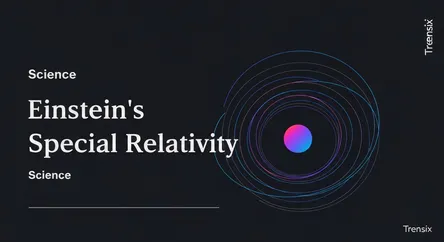Science
Einstein's Special Relativity

Discover Einstein's theory of special relativity. Learn how it reshaped our understanding of space, time, and energy with concepts like time dilation.
What is it?
Special relativity is a groundbreaking theory of physics developed by Albert Einstein in 1905. It's built on two fundamental principles: first, the laws of physics are the same for all observers in uniform motion, and second, the speed of light in a vacuum is the same for all observers, regardless of their motion or the light source's motion. This seemingly simple framework leads to profound consequences, including the concepts of time dilation (moving clocks run slower) and length contraction (moving objects appear shorter). It also produced the world's most famous equation, E=mc², which reveals the equivalence of mass and energy.
Why is it trending?
As a cornerstone of modern physics, special relativity is perpetually relevant. It underpins our understanding of the cosmos and is essential for fields like particle physics and astrophysics. Public interest often surges with advancements in space exploration, new discoveries from particle accelerators like the LHC, and its portrayal in popular media and science fiction films. It represents a major leap in human understanding, challenging our intuitive perceptions of reality and continuing to inspire curiosity about the fundamental nature of the universe.
How does it affect people?
Special relativity has tangible effects on everyday technology. The Global Positioning System (GPS) in your phone or car relies on its principles. Satellites orbit at high speeds, causing their internal clocks to tick slightly slower than clocks on Earth. Without correcting for this relativistic time dilation, GPS navigation would become inaccurate by several kilometers each day. Furthermore, the E=mc² principle is the basis for nuclear power, which generates electricity by converting tiny amounts of mass into vast amounts of energy. It also informs medical technologies like PET scans.